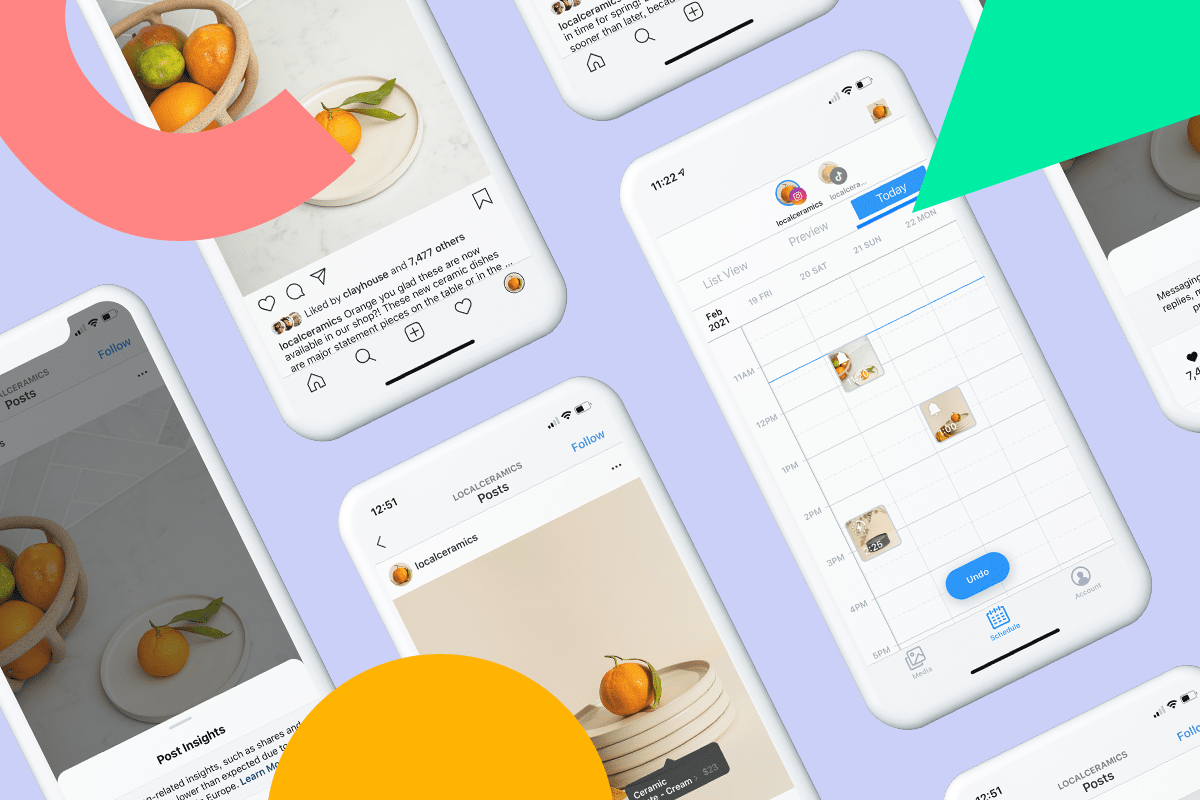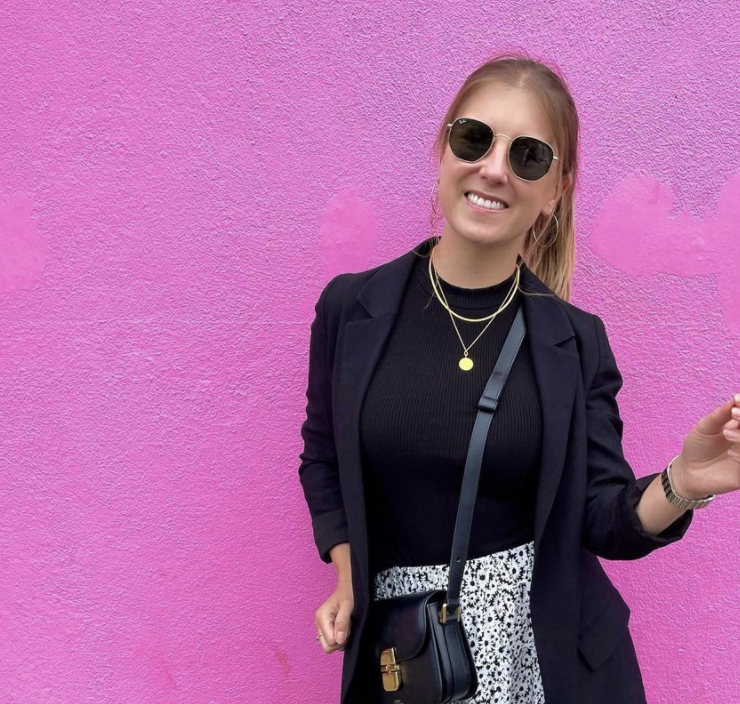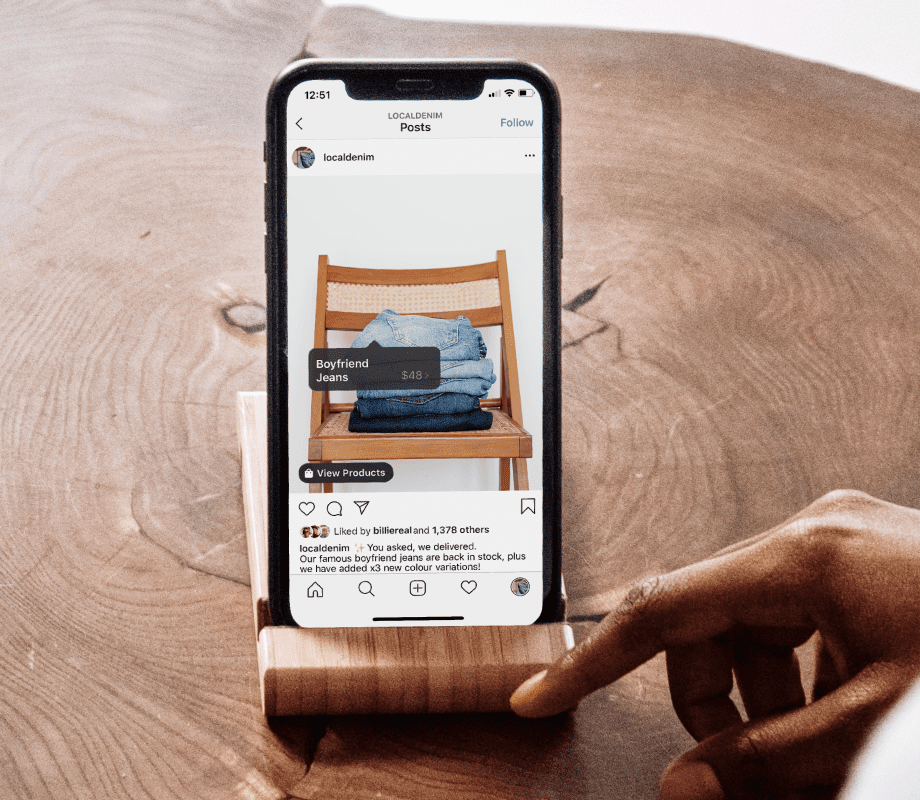Planning a product launch on social media is a huge opportunity to attract new followers, make sales, and convert your existing audience into customers.
Unlike a traditional in-store promotion, social media means brands can now reach thousands of potential customers when they bring something new to market.
However, it’s not as easy as sharing a single post on launch day. A successful product launch requires careful planning and preparation.
In this step-by-step guide, we’re sharing everything you need to know about launching a new product on social media — from setting your goals and developing a strong creative concept, to building a content plan that generates buzz and drives conversions.
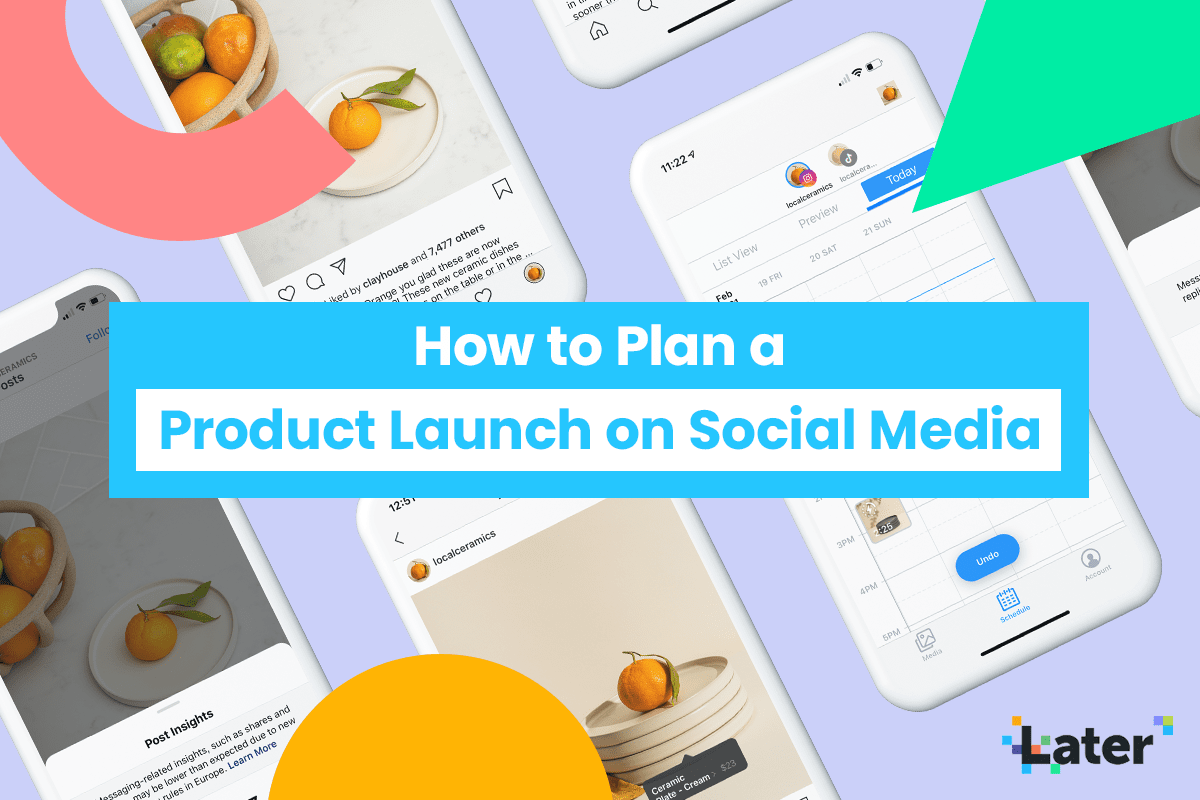
A Step-by-step Guide to Launching a Product on Social Media:
Ready to plan a best-in-class product launch on social media? Download our free checklist guide here:
Step #1: Define Your Goals
When it comes to planning a social media campaign, it’s important to start with the end in mind: your goals and KPIs.
If you want your new product launch to “be a success” on social media, it’s important to define what success actually means for your brand.
Depending on your situation, it could be to increase brand awareness, improve brand perception, drive sign ups and sales, or all of the above.
For example, when Later launched the ability to automatically schedule a first comment on Instagram, we had two marketing goals:
Drive upgrades to paid plans (the only way to access the feature)
Increase retention with existing paid plan users
Once you have clearly defined goals, you can develop creative strategies that will help you reach them.
TIP: Remember to set clear performance indicators when defining your goals to help you measure your success (more on this later).
Step #2: Nail Down Your Timeline
Timing is everything when it comes to launching a new product on social media.
Your product launch date is your deadline — so use it as a starting point and build your timeline backwards from there.
This will give you a potential scope of the project and how much lead time you have to work with. If your deadline looks tight, consider scaling back on some of your more ambitious ideas.
To add some perspective, we planned the marketing campaign for Later’s Instagram Stories scheduling tool two months in advance.
If you’re launching a physical product instead of a digital product or service, you may need to give yourself even more time to account for product photoshoots, influencer gifting, events, and video production.
You’ll also need to consider how long your campaign will run on social media for. This could be something along the lines of:
Day 0-7: Pre-launch hype
Day 8: Launch day
Day 9-13: Post-launch follow-up
Day 14-30: Integrating your new product into your regular content schedule, or planning additional activations to keep up the momentum
By breaking it down per day, or pre- and post-launch, you’ll be able to brainstorm creative ways to incorporate your new product into the campaign, without having dull, repetitive content.
For example, at Later we spent a full week directly promoting our Instagram Stories scheduling feature on social media.
We then launched a free Instagram Stories for Business course, which provided a new way to highlight the product and share valuable content.
Once you’ve set a timeframe, it’ll be much easier to holistically plan your content strategy.
TIP: Take a step back and look at your timeline objectively. Assess the consistency of your communications — are there any periods where audience fatigue could set in?
Step #3: Identify the Best Social Media Channels
Now that you have a goal and a timeline, it’s time to get strategic.
You might want to run your launch campaign across every social platform, but in reality, this isn’t always a viable approach.
Instead, it’s better to focus your efforts where you know you’ll gain the best return on investment in relation to your product launch goals.
For example, if you’re looking to raise awareness with a younger audience, you might want to invest heavily in your TikTok strategy.
But if you’re focused on sales and already have an engaged audience on Instagram, you might want to consider capitalizing on Instagram’s fully integrated e-commerce features.
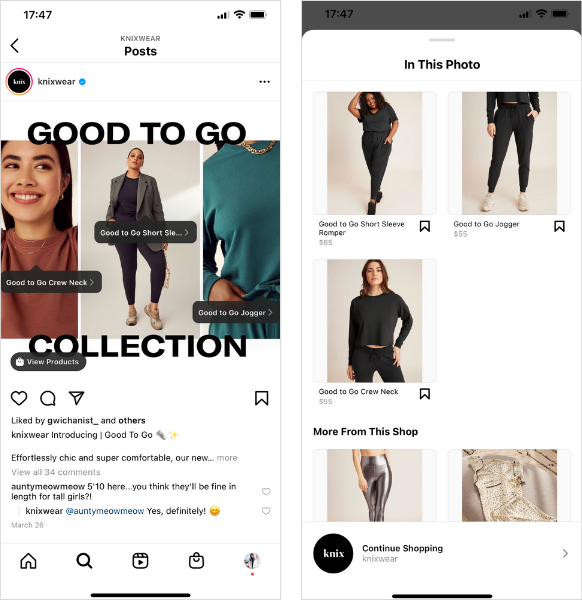
Whether you opt for TikTok, Twitter, Facebook, Instagram, Pinterest, YouTube, or beyond, each platform will require a slightly different content strategy.
The fundamental concept might be the same, but you should consider each platform’s specifications, unique features, and audience demographics as you ideate.
Remember, it’s always better to have a smaller amount of content that actually converts than a huge volume of content that misses the mark.
Discover the pros and cons of each social media platform in this recent blog post: How to Create a Social Media Strategy for Small Businesses
Step #4: Decide on Your Creative Direction
Now that you have all the fundamental details locked down, it’s time for the fun part: what will your campaign look like?
A fresh design can set the tone for your campaign at-a-glance and is also a great way to visually tie all of your product launch content together.
Sparkling water brand Recess marked the introduction of their Mood range with a creative update. The concept aligns with their existing identity, but has a fun new twist:
Not sure where to start?
Your creative direction should consider two key elements: visual style and a campaign message.
Firstly, the visual style of your campaign needs to be defined before you work on anything else.
This should include a color palette, some inspirational imagery, a design style guide, or templates that will work across your social channels.
Mood boards are another great idea at this stage of planning. You can easily create a mood board by pinning images on Pinterest, or go old school with a cut and paste scrapbook.
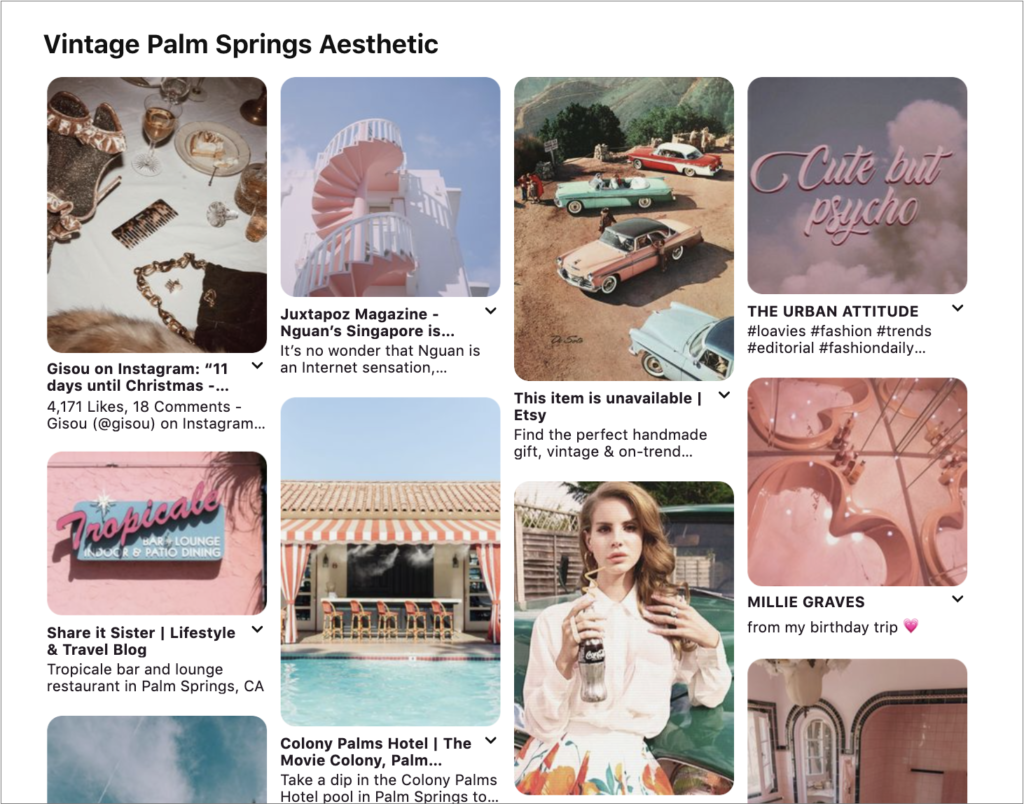
Secondly, your creative direction should outline your overarching campaign message. This can be anything from a fully polished mission statement to a few words or phrases that capture the sentiment of your campaign.
This will help you fine-tune your content and make sure how you introduce, explain, or sell your product is consistent throughout the campaign.
Ready to take your visual branding to the next level? Discover how to design a standout social media campaign in this step-by-step guide!
Step #5: Consider Offline Activations
When you’re planning a new product launch on social media, you’ll probably focus on the digital side of things: photos, videos, graphics, and copy.
But today, offline activations are becoming an integral part of online campaigns.
From influencer events and launch parties to wall murals and coffee cups, more and more brands are integrating Instagrammable moments into their new product launches.
For example, skincare brand Summer Fridays installed a rose covered phone booth in LA to mark the launch of their R+R face mask.
Summer Fridays then encouraged their community to share their photos in the booth using a dedicated hashtag — creating a viral social media moment.
The Instagram-ready floral installation had a clear connection to their new rose-based product, using the same color tones as the product’s packaging.
If you’re considering an offline activation as part of a product launch, think about how incentivized people will be to take photos and share them with their community — and how you will keep track of this content.
Offline activations can be a great way to collect on-brand user-generated content to use in your post-launch campaign, but you’ll need a memorable hashtag and a clear call-to-action to group it all together.
ICYMI: Later’s Search by Hashtag feature allows you to quickly browse recent Instagram posts for a specific hashtag, engage with relevant posts, or tap to add a post to your Media Library!
Step #6: Influencer Marketing Strategy
When it comes to launching a new product on social media, an influencer marketing strategy can have a huge impact on your success.
Consumers are often much more likely to try something if they can see how a real person uses it — and the benefits it brings.
How you decide to work with influencers will depend on the type of product you have, your budget, and your campaign objectives.
For example, if your goal is to raise brand awareness with a limited budget, you could partner with multiple Nano or Micro influencers (those with under 100K followers). Their engagement rate is higher than Macro or Mega Macro influencers on average, while their fee rate is typically lower.
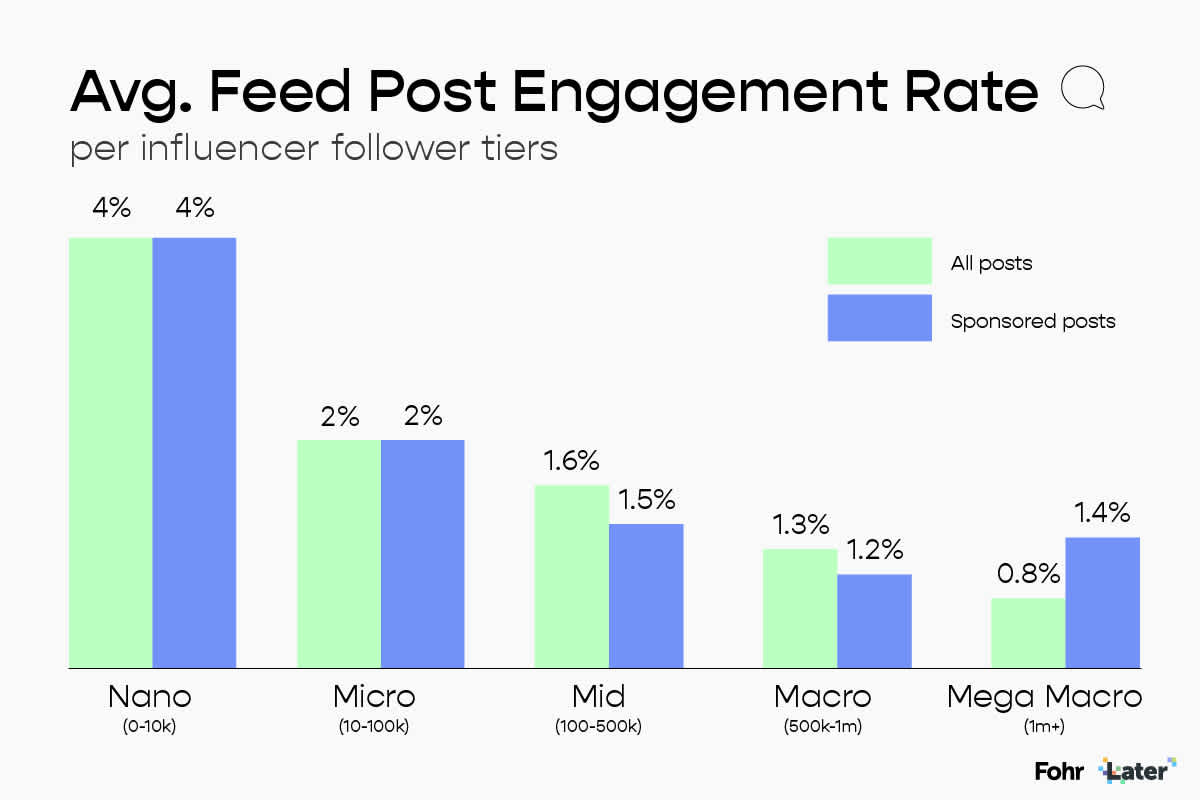
Later x Fohr: Average Feed Post Influencer Engagement Rate Per Follower Tier
You’ll also want to consider what type of content will work best to achieve your goals: a YouTube product demo? A quick Reels tutorial? A branded TikTok trend? A series of chatty Instagram Stories? A detailed blog post? The opportunities are endless.
And influencer marketing doesn’t have to be reserved for the promotion of physical products. Later regularly works with influencers like Jera Bean to share the benefits of our digital social media management tools.
Finding the right influencer partner can take some trial and error — but once you find the perfect match, the results can skyrocket.
Ready to kickstart an influencer marketing campaign? Check out our recent blog post: 6 Questions to Ask Before Working with an Influencer.
Step #7: Create Your Campaign Assets
Once you have the overall strategy nailed down for each channel, you can start creating assets like photos, videos, graphics, and GIFs.
Keep in mind that the type of content will vary depending on the size of your company, and whether you’re selling a physical or digital product.
For a physical product, you’ll create photos and videos featuring the actual product.
This could include a mix of product shots and lifestyle photos, with your creative shoot ranging from a small photo session with your iPhone to a multi-day, big budget shoot with photographers and videographers.
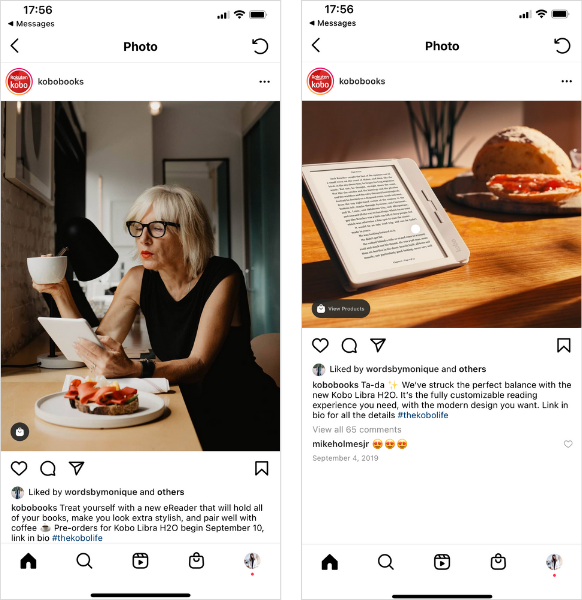
For a digital product, most of the content creation will likely come in the form of graphic images or videos. If you’re selling a service, you may do a photoshoot of yourself.
This part of the planning process varies greatly, but the most important thing is that you are sticking to your creative direction and creating high-quality content for your social channels.
Here are some key things to consider during your creative process:
Do you have a strong design brief? Have you included any inspirations, a moodboard, concept overview and desired outcome? This can come in handy especially if you’re working with graphic designers or a creative team.
What is your branded hashtag, and should it be included in your design assets?
Do you want to repurpose content for multiple channels? If so, keep in mind that each platform has different dimensions — shoot with enough white space to crop and resize!
Will you use trackable UTM links to measure your success?
Have you remembered cover images, thumbnails, and meta images?
Download our free product launch checklist to make sure you have all your social assets covered — from IGTV cover photos to Instagram Stories highlights!
Step #8: Prep Your Social Media Content Calendar
Once you have all your content and assets, it’s time to put everything together and plan out your social media content calendar for maximum engagement and reach.
While you may have an official “launch” day for when your new product is available and on sale, you might want to have a different timeline for social media.
Going live on social a few days early can build hype and demand — while also creating a stronger sense of community as followers feel “in the know.”
To plan what content goes live on each platform and when, you can use a digital content calendar.
Later’s intuitive and easy-to-use content calendar helps you view all of your social media content together by day, week, or month.
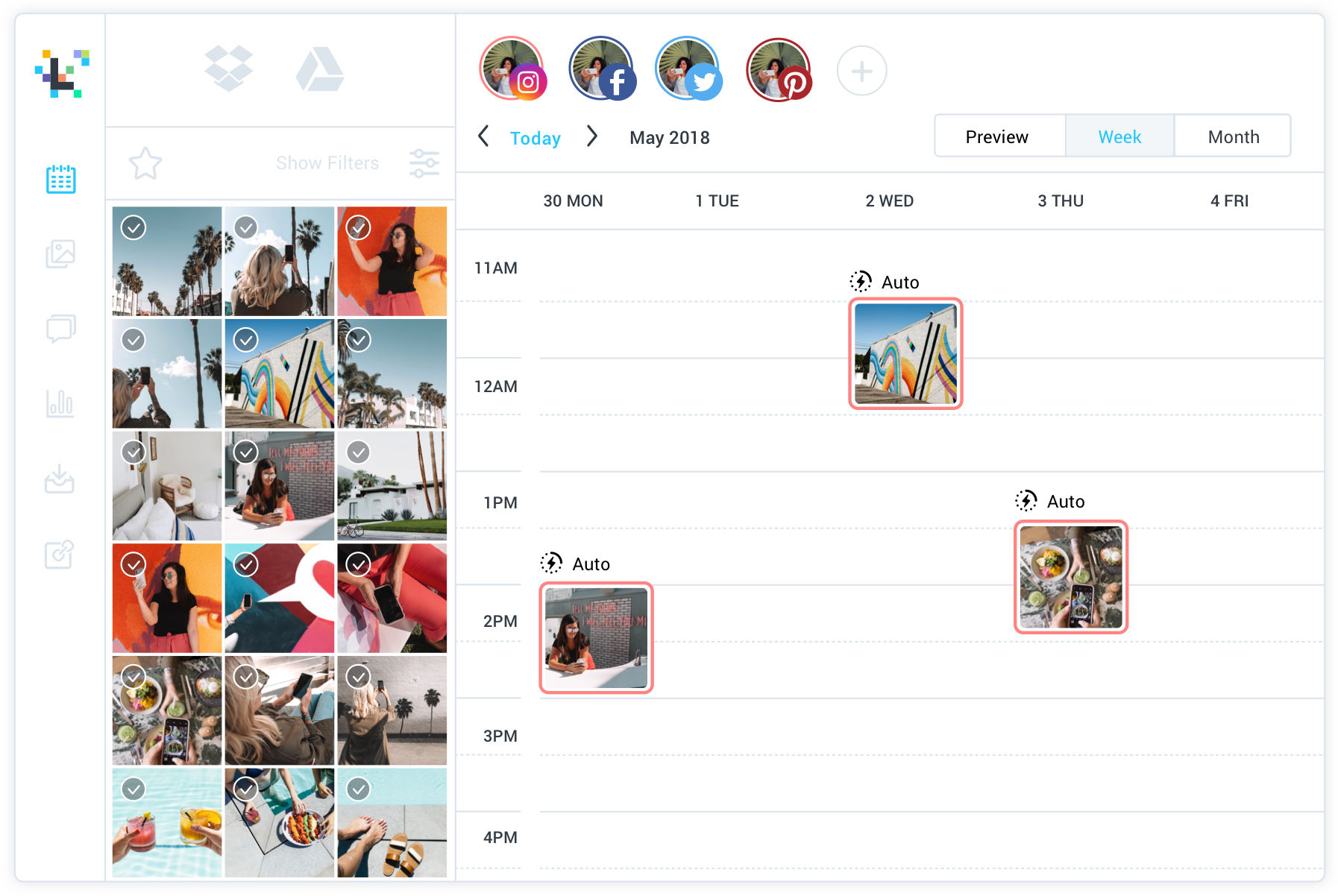
You can easily drag and drop images or videos from your Media Library into your preferred publishing slots — and schedule posts for Instagram, Twitter, Facebook, TikTok, and Pinterest all from one dashboard.
Even if you don’t have all your final assets ready, you can still plan out your posting schedule with Later’s calendar notes feature, and script your captions in advance.
You can add notes to fill out what type of content will be going live on each day, so you have a clear overview of how your social strategy will play out.
Once all your assets are finalized, it’s always a good idea to preview how your designs will look in your Instagram feed.
The goal is to create a cohesive grid aesthetic that conveys the key values of your product campaign and leaves a lasting impression on your audience.
For the LaterCon launch, Later’s social team shared user-generated content in harmonious colors alongside campaign content, creating a strong and consistent aesthetic.
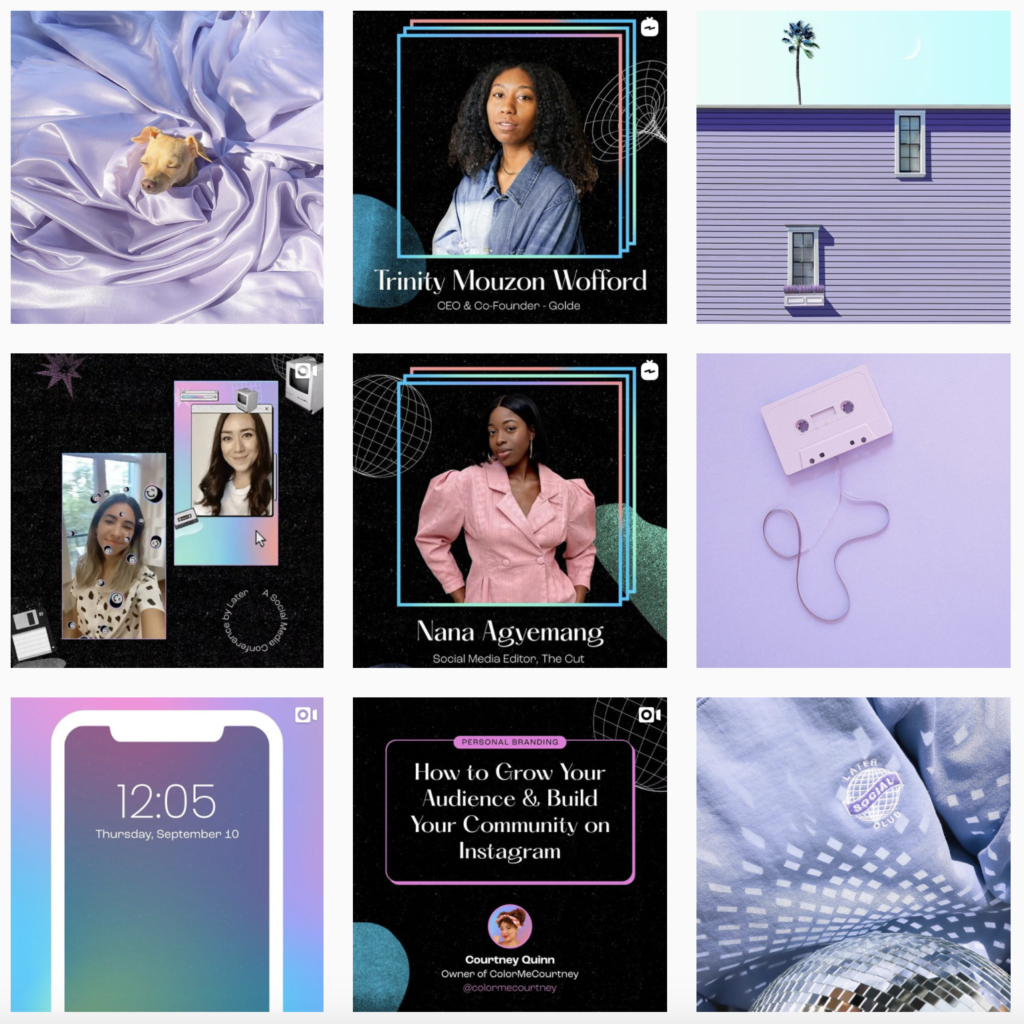
Later’s Visual Instagram Planner shows you exactly what your Instagram feed will look like with your future posts in it, so you can achieve the perfect grid.
You can easily rearrange or swap out photos from your media library until you’ve found the best composition for your feed.
Plus, you can now use Later’s Visual Planner straight from your mobile — so you can easily preview and edit your feed composition on-the-go!
Step #9: Launch Your Campaign
By the time launch day arrives, you should have all your content and hype-building captions prepped and ready to go.
All that’s left to do is monitor the excitement, answer questions, and engage with your community.
Here are a few other things you might need to do on the big day to make sure your launch day goes smoothly:
#1: Share a Countdown
Creating a countdown is a great way to build anticipation for your product launch.
The Instagram Stories countdown sticker acts as a live countdown, and users can tap to get a reminder in the app.
#2: Update Your Social Media Bios
You may want or need to change the link in your bio to a specific campaign landing page, or use a trackable link. You can also update your bios to include a call-to-action to purchase your new product, and for significant launches, you might want to update your profile image.
#3: Save Instagram Stories to Highlights
Your beautifully crafted launch day Instagram Stories posts don’t have to disappear after 24 hours. Save your stories to an Instagram Highlight to make it easy for people to shop or learn more about your new product throughout the duration of your campaign.
#4: Reply to Comments and DMs
Make sure you spend enough time responding, engaging, and answering your followers’ questions across all your platforms. You may need to enlist help from your wider team to achieve this, but it’s an important part of building trust with your audience.
#5: Reshare User-generated Content
There’s going to be a lot of chatter about your product launch. Show your appreciation for your followers’ positivity and excitement by resharing their posts on stories, or reposting to your feed (with permission). The more user-generated hype you can share, the better.
TIP: Streamline your user-generated content collection process with Later’s Search by @mentions and Tags features.
#6: Host a Live Q&A
Going Live on Instagram, TikTok, or Facebook on product launch day is a great way to connect with your community on a more intimate level. You’ll be able to answer any burning questions potential customers may have, showcase your product in greater detail, and keep the excitement levels up for your product launch.
Step #10: Track and Measure Your Social Media Success
Success looks different to every brand and business, but you should spend time reviewing how it tallied up against your goals.
Beyond tracking leads, signups, or e-commerce purchases, you’ll also want to take a holistic look at how your campaign performed and where you could improve for next time.
For example, you can glean insights about what content resonated best with your audience, what format generated the most buzz, and what channel drove the most engagements.
If you’re not sure where to start, Later’s Instagram Analytics feature gives you a visual overview of how your posts and stories are performing — all in an easy-to-use dashboard.
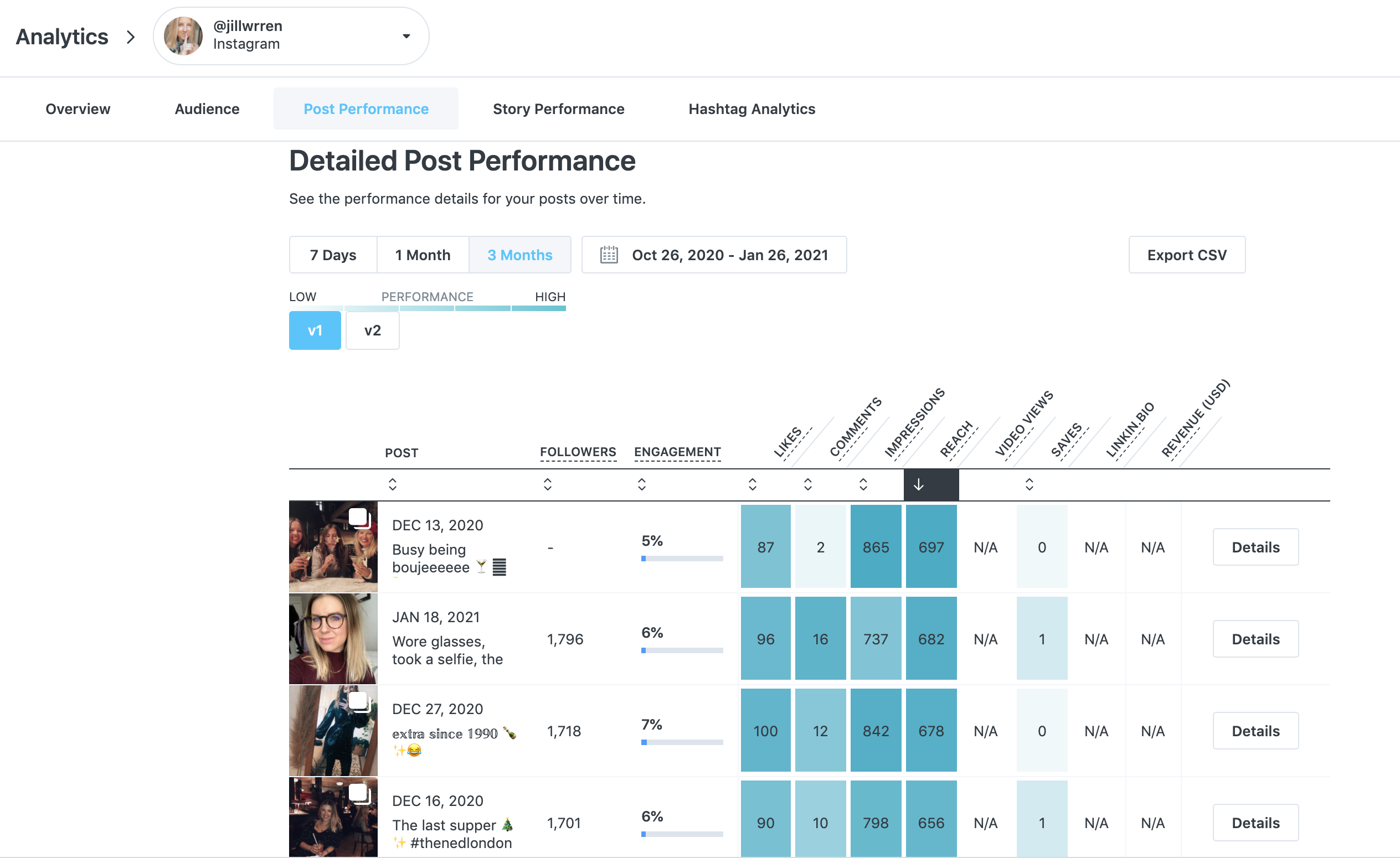
You can track up to 3 months worth of Instagram posts and stories, so you can see which have performed best — and filter by key metrics, such as likes, reach, comments, and more.
All of this knowledge can then be put into your next product launch campaign.
And there you have it, a complete step-by-step guide to launch a product on social media!
Don’t forget, you can download our free checklist to help plan your campaign and stay on the right track. Simply fill out the form below to get it delivered straight to your inbox:
